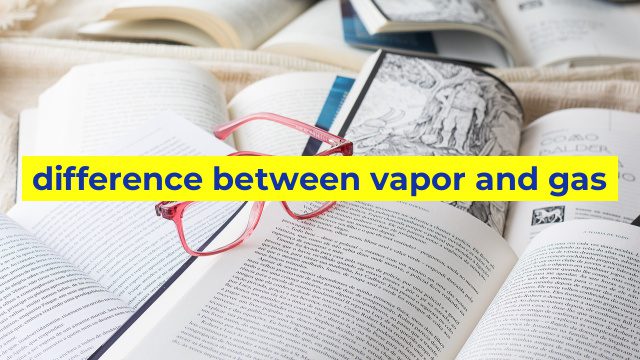The Key Differences Between Vapor and Gas
When discussing topics like chemistry and thermodynamics, it’s important to have a solid understanding of the terminology used. Two terms that are often used interchangeably but have distinct differences are “vapor” and “gas”. If you’re curious to know what sets them apart, read on for a breakdown of their differences.
What is Vapor?
Vapor consists of particles of a substance that are released into the air through heating or evaporation. This substance could be a liquid or a solid, but it changes state to become a gas as it reaches a certain temperature. This happens because particles gain energy and move more quickly, making it easier for them to break away from the surface and disperse as a gas.
Vapor can be seen as a temporary state between a liquid or solid and a gas. The term is commonly used when describing substances like water, which can exist as a liquid, solid (ice), or vapor (steam). The main difference between vapor and gas is that vapor is the result of a phase change, while gases are always in the gas state.
What is Gas?
Unlike vapor, gas is a state of matter that exists at all times for certain substances, like oxygen or nitrogen. Gas consists of particles that are in a constant state of motion and disperse evenly in any given space. These particles collide and move around freely, making gases compressible and able to fill any container they occupy.
One important characteristic of gases is that they have no defined shape, volume, or mass. They will take on the shape of their container and can be compressed or expanded depending on external factors such as temperature and pressure.
The Bottom Line
While vapor and gas may seem similar at first glance, there are significant differences between them. Vapor is a temporary state of matter that is formed when a substance undergoes a phase change, like evaporation. Gas, on the other hand, is a state of matter that exists for certain substances at all times, with particles in constant motion and filling the available space.
Knowing these differences is essential for understanding topics like atmospheric science, thermal energy, and fluid dynamics. By mastering the distinction between vapor and gas, you can be more confident in your understanding of the world around us.
Table difference between vapor and gas
There are several differences between vapor and gas. Here’s a comparison table:
| Property | Vapor | Gas |
|---|---|---|
| State of matter | Gaseous state of a substance at or below its critical temperature | Gaseous state of a substance above its critical temperature |
| Pressure | Lower than atmospheric pressure | Equal to or higher than atmospheric pressure |
| Temperature | Below boiling point of the substance | Above boiling point of the substance |
| Phase transition | Can exist as both gas and liquid at the same time in equilibrium | Cannot exist as both gas and liquid at the same time in equilibrium |
| Examples | Water vapor, steam, alcohol vapor | Oxygen gas, nitrogen gas, hydrogen gas |
